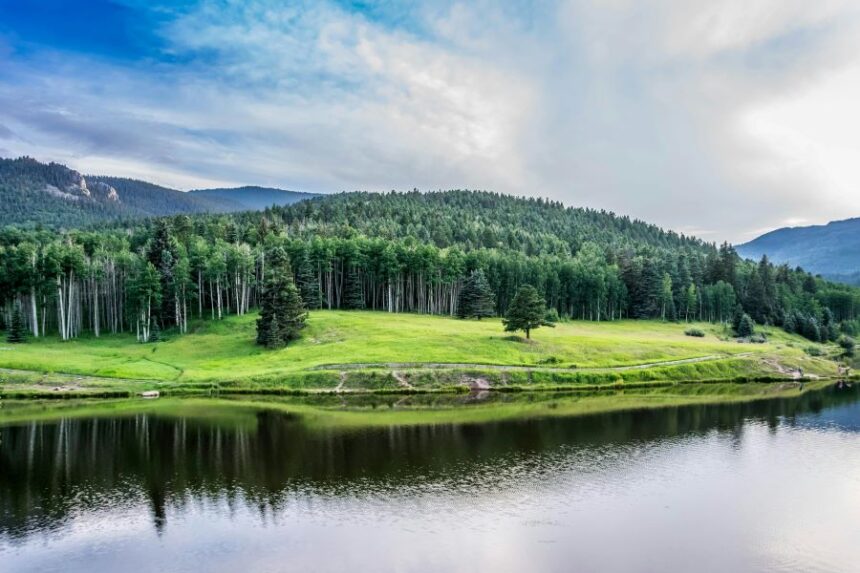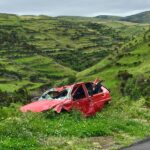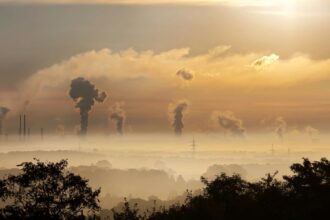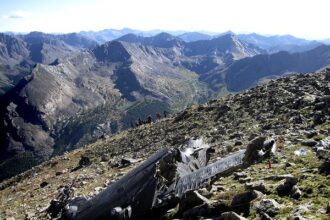Wildfires are a pressing concern for Colorado residents, particularly during dry and windy seasons. Fire outbreaks are common due to the state’s mountainous terrain and varied climate. The question, “Is there a wildfire in Colorado?” becomes more than a casual query—it reflects genuine concern about safety, property, and environmental health.
In recent years, Colorado has experienced several large-scale wildfires that have impacted communities, ecosystems, and local economies. From the Marshall Fire to the East Troublesome Fire, the devastation caused has prompted an increased demand for real-time information, emergency readiness, and fire prevention initiatives. This comprehensive article’ll address whether there is a wildfire in Colorado right now, how to check for active fires, the causes of wildfires, safety tips, and preventive measures.
The phrase “Is there a wildfire in Colorado?” isn’t just aboutthe current fire status. It also triggers questions about emergency services, fire tracking technology, and how residents and travelers can stay safe.
Is there a wildfire in Colorado?
Yes, wildfires are relatively common in Colorado, especially during dry seasons. To check “is there a wildfire in Colorado” right now, visit resources like InciWeb, Colorado Division of Fire Prevention and Control (DFPC), or NOAA fire weather forecasts.
Why Wildfires Keep Sparking in Colorado
Colorado’s landscape and weather patterns make it a hotspot for wildfires. The state’s high elevations, frequent droughts, and dry vegetation create the perfect storm for ignition. In years with low snowfall and limited rainfall, forests become tinderboxes—ready to burn with even the slightest spark.
Population growth has also pushed more communities into these fire-prone areas. As neighborhoods expand into forested foothills, homes and lives are increasingly at risk. A single ember from a campfire, a discarded cigarette, or a downed power line can ignite a fast-moving wildfire.
Climate change further intensifies the issue. Warmer temperatures and shifting weather patterns have extended Colorado’s fire season from just summer to a broader period spanning late spring through early fall. At the same time, beetle-killed trees have left vast swaths of forest filled with dead, highly flammable wood.
Colorado’s strong winds, particularly along the Front Range, add to the danger, which can carry burning embers across miles, sparking new fires beyond containment zones. Given these risks, it’s no wonder the question, “Is there a wildfire in Colorado?” is frequently and urgently asked.
How to Check If There Is a Wildfire in Colorado
Wildfires in Colorado can start and spread quickly, making real-time updates crucial for safety and preparedness. If you’re asking, “Is there a wildfire in Colorado?”—here’s how you can find out fast.
InciWeb is the Official Wildfire Tracker
If you’re asking, “Is there a wildfire in Colorado?” Your first stop should be InciWeb. This official wildfire reporting system provides up-to-date details on active fires, including detailed maps, containment percentages, and current evacuation notices. It’s a trusted platform used by both government agencies and the public.
Colorado DFPC Shares Local Fire Updates
The Colorado Division of Fire Prevention and Control informs residents of the latest fire danger levels and incident updates. This site is especially valuable for tracking localized risks across various counties and understanding preparedness efforts happening throughout the state.
NIFC Offers Nationwide Fire Data
The National Interagency Fire Center regularly updates nationwide wildfire statistics and summaries. It includes daily reports on active wildfires in Colorado, helping users compare local conditions with broader fire trends across the western United States.
Fire Tracking Apps Provide Instant Alerts
Mobile apps like Watch Duty, FEMA, and MyRadar deliver real-time wildfire alerts based on your current GPS location. These tools help you avoid developing fire threats by sending push notifications the moment nearby activity is detected.
Local News Keeps You Updated Fast
Regional news outlets 9NEWS Denver and The Denver Post offer breaking wildfire coverage and live updates. Enabling emergency notifications or following their websites ensures you won’t miss critical information when wildfires occur in your area.
Signs of a Possible Wildfire Nearby
Sometimes, wildfires can erupt suddenly, and you may not have immediate access to online resources or alerts. Early warning signs on the ground are critical for personal safety and timely evacuation. If you’re concerned and wondering, “Is there a wildfire in Colorado?”, paying attention to your surroundings can give you vital clues.
Here are some of the most common and visible signs that a wildfire may be nearby:
- Large smoke plumes rising into the sky, mainly dark brown, gray, or black, can signal an active blaze close to your location.
- An increased presence of emergency response vehicles, such as fire trucks and police cars, may indicate an active incident in the area.
- The strong, acrid smell of burning wood or chemicals in the air often accompanies nearby fire activity.
- Smoke traveling from an active wildfire can cause a sudden and noticeable drop in air quality, including hazy skies and difficulty breathing.
- Unusually hot, dry, and windy conditions, especially during Colorado’s fire season, increase the likelihood of fire ignition and rapid spread.
- Real-time alerts or chatter on emergency scanner apps or NOAA weather radios can also provide unconfirmed but useful indicators of local fire activity.
Don’t wait for official confirmation if you observe any of these warning signs. Begin following local evacuation guidelines, gather your essentials, and promptly move to a safer location.
What To Do If There Is a Wildfire in Colorado
Wildfires in Colorado can ignite and spread rapidly, often with little warning. Acting quickly can be lifesaving if you suspect or are alerted that a wildfire is nearby. Stay informed using reliable fire-tracking apps, local news sources, and emergency notifications. Prepare an emergency kit with essentials like water, food, medications, a flashlight, important documents, and a first-aid kit.
Secure your home by turning off gas lines, removing flammable items around the property, and sealing windows and vents to keep out smoke. Keep lights on and mark your home for firefighters if time permits. If evacuation orders are issued, don’t delay—leave immediately along a pre-planned safe route with a full tank of gas.
Once the fire has passed, wait for official clearance before returning. Even after flames are gone, hot spots and debris can remain dangerous. When asking, “Is there a wildfire in Colorado?” always prioritize safety.
Where to Get Real-Time Updates for Wildfires in Colorado
If you’re wondering, “Is there a wildfire in Colorado?”, staying informed through real-time updates is essential. Here are five highly reliable sources you can use to track wildfire activity and receive alerts across the state:
1. Colorado Wildfire Info on Twitter (@COFireInfo): This is one of Colorado’s most reliable and immediate sources for wildfire updates. State agencies manage the handling and provide official information about active fires, containment efforts, evacuations, and weather warnings.
2. Ready.gov Fire Safety Section: This federal emergency website offers comprehensive resources, including fire safety plans, evacuation tips, and checklists for preparing your home before a wildfire hits. It’s a great source for general fire safety education.
3. NOAA Red Flag Warnings: The National Oceanic and Atmospheric Administration (NOAA) issues red flag warnings when weather conditions are ideal for wildfires. Their interactive maps highlight the most at-risk regions, helping you stay ahead of potential fire outbreaks.
4. County Sheriff and Local Fire Department Websites: Many Colorado counties use official sheriff or fire department websites to maintain emergency alert systems. These platforms are excellent for localized updates, road closures, and evacuation zones.
5. Facebook Community Groups: Local groups such as “Colorado Wildfire Info” often provide timely on-the-ground updates from residents. These firsthand reports are valuable for spotting early activity and learning about community-specific conditions.
Final Thoughts
If you’ve ever asked, “Is there a wildfire in Colorado?” you’re not alone. It’s a vital question with potentially life-saving implications. Staying informed is easier than ever with tools like InciWeb, DFPC alerts, fire tracking apps, and real-time social updates.
Whether you live in Colorado or plan to visit, stay weather-aware, sign up for alerts, and always have an emergency plan. Wildfires are unpredictable, but preparation and knowledge are your best defense.
FAQ’s
How do I check if there’s a wildfire near my location in Colorado?
You can check InciWeb for official incident updates, use fire-tracking apps like MyRadar or Watch Duty, or follow real-time alerts from Colorado’s DFPC and local emergency services.
What causes wildfires in Colorado?
Wildfires often result from natural causes like lightning, but human actions such as unattended campfires, discarded cigarettes, and faulty power lines are also major contributors.
When is wildfire season in Colorado?
Wildfire season usually spans from late spring in May through the fall months of October, but it can start earlier or end later depending on yearly weather conditions.
What should I pack for a wildfire evacuation?
Prepare an emergency kit with essentials like bottled water, non-perishable food, medications, ID documents, phone chargers, face masks, clothes, and a flashlight for safe evacuation.Can tourists safely visit Colorado during fire season?
Yes, visitors can travel safely, but they must stay informed through alerts, avoid closed or fire-prone areas, and follow local safety guidelines and evacuation notices if needed.












